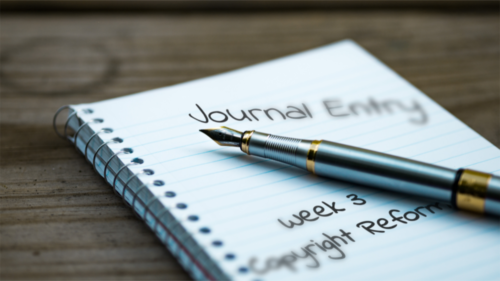Prompt 1. Copyright in the News – Hudson Institute_White Paper(2).pdf
Response:
The Hudson report makes a solid argument in its whitepaper, The Conservative Case for Reform of the Copyright Office housed within the Library of Congress. It reviews the history behind its establishment; examines the constitutional requirements for restructuring with a comparison of the legal and policy benefits approaches; and weighs the costs impacts and benefits in transitioning to needed relevance and engagement in today’s current digital space.
I agree that the Copyright Office needs to be restructured, and further agree that the proposed approach to doing so proposed by the Hudson report is a very good blueprint to follow. Back in the late 19th century, Librarian Ainsworth Spofford’s rationale for galvanizing the disjointed inefficient operations across the states into a national archive collection for reliable preservation and recordation made logical sense. Copyrighted artifacts during this era were submitted books, for which the Smithsonian and Department of Interior personnel were ill prepared, insufficiently skilled, in dependently tracking and properly cataloging the large volumes of documents received. The 1897 Congress enacted this request, the intent envisioned was realized and was tremendously successful.
With the passage of more than 145 years, the Copyright Office has failed to keep pace with the many rampaging advancements in technology innovations, implementations, and usage in the digital online U-verse. The preservation and recordation protocols remain intact, cataloging manually approximately 60 million records as of 1978. The transcription process to electronic files, whereas well intentioned, lags in being coded into a widely available, useable online database. However, the greatest impediment to the Copyright Office is not an identity crisis with many masking problems. Rather the Library of Congress’s many responsibilities serving as the main research arm of legislative branch of government, is unable to address the critical needs of the Copyright Office for effective online operations in today’s current digital online environment. The Copyright Office needs to be separated from the Library of Congress and established as an entity, per the Hudson prescriptive report. This would “… more explicitly respect the constitutional framework of government… enhancing efficiency, reducing information costs… and maximizing economic transactions.” Or as stated in the voice of an expertly recognized practitioner,
“Like a living creature, an organization works best if it can rely on a nervous system that sends information immediately to the parts that need it. A digital nervous system can unite all of an organization’s systems and processes, releasing rivers of information and allowing businesses to make huge leaps in efficiency, growth, and profits. I have a simple but strong belief: how you gather, manage, and use information will decide whether you win or lose.” (Gates, Business @ the Speed of Thought)
Prompt 2. Definition of terms and an example of each,
Plagiarism is the act of taking and or quoting the original work of an author, creator and illegally presenting it as one’s own work. This correlates often with ripping off academic or created works. This may constitute copyright infringement as well.
Example: A student submits a research paper including substantial text information about a subject matter, in attempting to convey related thought processing as their own without paraphrasing and attributing credit to the author(s).
Copyright infringement is the unauthorized use of works created by others or organizations for which those works are protected by copyright laws. This includes plagiarism as a subset of protected works, but also inventions, and specific designs.
Example: A recent public newsworthy example was “Miley Cyrus Settles $300 Million Copyright Lawsuit Over ‘We Can’t Stop’” (URL: https://bit.ly/35rpVsB)
Attribution: Is explicitly stating and giving credit to the originator(s), creator(s), or author(s) for their original created works should it/they be quoted, referenced, and or paraphrased in one’s own created work referencing such in any way.
Example: “I have a simple but strong belief: how you gather, manage, and use information will decide whether you win or lose.” (Gates, Business @ the Speed of Thought)
Reference
Gates, B. 2009. Business @ the Speed of Thought. Grand Central Publishing ISBN:0446912808 9780446912808.
Transformation: Is the rights granted under the Fair Use legal doctrine to exercise freedom of expression to take an original work and add new expressions to convey new transformative information, parody, insights, critiques, rebuttals, or endorsement proof of a fact.
Example: The entertainer Weird Al Yankovic has done parodies of the following artists,
| Original Artist(s) | Original Work | Weird Al Yankovic’s Parodies |
| Michal Jackson | Just Beat It | Just Eat It |
| Chamillionaire and Krazy Bone | Ridin | White & Nerdy |
Note: Click links to review/compare original work versus parody
References
Teppe, S., Oman, R. 2015. A 21st Century Copyright Office: The Conservative Case for Reform. Hudson Institute. Retrieved from: https://bit.ly/3cJKZOU
Gates, B. 2009. Business @ the Speed of Thought. Grand Central Publishing ISBN:0446912808 9780446912808.
Image by Clker-Free-Vector-Images from Pixabay



